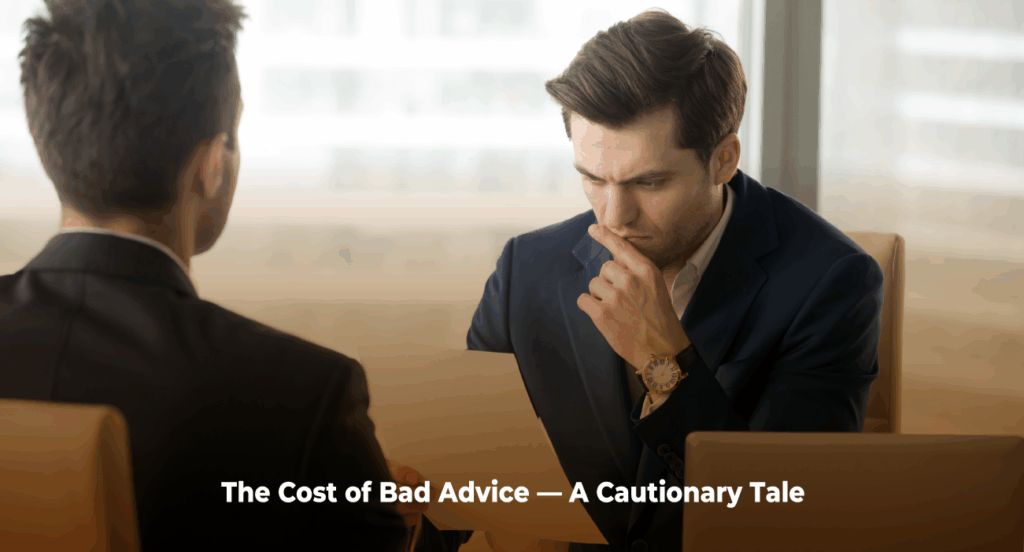At Investax, we recently received a consultation call from a medical practitioner who had structured his entire financial life under one trust. Following advice from his accountant, he had purchased all his assets — including his principal place of residence (PPOR) — under this medical practice trust.
Overview: Ahmed, a successful doctor running his own medical practice, reached out to Investax for advice about selling his home and purchasing a new property. His main concern was the large capital gains tax (CGT) he would need to pay on the sale of his existing home, which was owned by a trust. The growth in the property’s value over the years meant the potential CGT liability ran into hundreds of thousands of dollars.
Even though Ahmed already suspected the outcome, he wanted to know whether there was any way to minimise or avoid this tax. Unfortunately, because his principal place of residence (PPOR) was held in a medical practice trust, he had lost the main residence CGT exemption that would normally apply to individuals.
We are assuming the advice was given with good intentions — to protect his wealth from potential lawsuits related to his medical practice. Unfortunately, what was meant to be an asset protection strategy had created a structure full of tax inefficiencies and unnecessary risk exposure.

Why Shouldn’t You Buy Your Home in a Trust?
One of the first things we discussed in our consultation was the impact of holding a home (PPOR)inside a trust. While it may seem like a smart way to safeguard a family home, the tax and legal implications can be severe.
Loss of Capital Gains Tax (CGT) Exemption – When a doctor or medical professional holds their PPOR in a trust, they lose the main residence exemption that normally applies to individuals. This means that if the property is sold in the future, the trust must pay capital gains tax on the entire profit — even though it’s the family home. For high-value properties in cities like Sydney or Melbourne, this could translate to hundreds of thousands of dollars in unnecessary tax.
Loss of Land Tax Exemption – In most Australian states, individuals receive a land tax exemption on their primary residence. However, trusts do not. By placing the PPOR into a medical practice trust, our client was paying annual land tax on a property that should have been tax-free. When we calculated the cost, we found that one year’s land tax could easily fund a proper asset protection strategy designed by a specialist lawyer.
Complicated Taxation of the Trading Trust structure – When a trust holds a mix of trading income and expenses, investment income and expenses, and non-deductible costs, it creates unnecessary complexity in the tax calculation process. The risk of accounting errors increases significantly, as borrowing levels may change each year and expenses can easily become mixed if financial records are not well organised. In such cases, even the most experienced accountants are limited by the quality and accuracy of the information provided to them.
For medical practitioners and business owners, buying a home in a trust often results in paying more tax, higher compliance costs, and unnecessary complexity — without achieving the protection they were promised.

Why Shouldn’t You Mix Your Trading Activity with Your Investment Activity?
Another major concern we identified was that the same trust was used to operate the doctor’s medical practice and hold investment properties. While combining everything under one umbrella might seem convenient, it significantly increases exposure to risk.
Business Risk Contaminating Investment Assets – As a practising doctor, our client carries professional liability risk from his medical practice. By using the same trust for both the trading business and investments, any claim or lawsuit arising from his medical centre could endanger all the assets owned by that trust — including his home and rental properties.
If a patient or employee pursued legal action, the trustee would be liable, putting every property at risk. In other words, one legal issue could wipe out everything he had worked for.
Tenant and Property Risks – Similarly, investment properties come with their own set of liabilities. If a tenant or contractor were injured at one of the properties owned by the trust, the trust itself could be sued. Because the trust also owned the medical practice and the home, this exposed all assets to cross-contamination risk.
Lack of Strategic Separation – From a tax planning and asset protection perspective, trading and investment activities should be separated. Mixing them under one trust removes flexibility, makes accounting more complicated, and prevents the trust from being optimised for specific purposes.
For example, income streaming, capital distribution, and even GST treatment differs between business operations and passive investments.
At Investax, we regularly meet doctors and medical practitioners who have unknowingly been placed in this risky position because of generic structuring advice. The intention may be good, but without proper understanding of trust law and taxation, these strategies often backfire.

The Cost of Bad Advice — A Cautionary Tale
This particular doctor was one of the most genuine people we’ve met — humble, kind, and focused on helping others. Yet, his previous accountant had placed him in a multi-faceted danger zone.
His medical practice trust had become a ticking time bomb:
- His home was exposed to litigation risks.
- His investments were linked to his trading income.
- He had lost CGT and land tax exemptions that individuals normally enjoy.
Instead of achieving asset protection, he had ended up with a structure that magnified his exposure and tax burden.
This isn’t an isolated case. Many medical practitioners and doctors are given similar advice by well-meaning accountants who may not fully understand the intersection between taxation, asset protection, and trust law. A one-size-fits-all approach rarely works when significant assets and professional liability are involved.

There Are Better Ways to Protect Your Home and Assets
During our discussion, we explained that there are many legitimate strategies to protect a family home without losing its tax benefits.
Professionals often explore methods such as second mortgage strategies, caveats, and asset ownership reviews that can provide substantial protection against third-party claims — without transferring the home into a trust.
While we did not offer a fixed solution during the complimentary consultation, we encouraged the doctor to review his structure through a detailed strategy session with our team. Our focus was to help him understand that true protection comes from strategic separation of assets, not from combining them under one trust.
What’s Next?
At Investax, we specialise in helping doctors, medical practitioners, and healthcare professionals build smart, compliant structures that protect their assets and optimise tax outcomes.
If you have received similar advice or are unsure whether your medical practice trust is working for or against you, it’s worth getting a second opinion. A well-designed structure should minimise your capital gains tax, preserve your land tax exemption, and protect your property — not jeopardise them.
Your home should be your safe zone, not a financial liability.
Book a complimentary consultation with our team today to review your structure and explore how you can achieve true asset protection, smarter tax planning, and peace of mind.
General Advice Warning
The material on this page and on this website has been prepared for general information purposes only and not as specific advice to any particular person. Any advice contained on this page and on this website is General Advice and does not take into account any person’s particular investment objectives, financial situation and particular needs.
Before making an investment decision based on this advice you should consider, with or without the assistance of a securities adviser, whether it is appropriate to your particular investment needs, objectives and financial circumstances. In addition, the examples provided on this page and on this website are for illustrative purposes only.
Although every effort has been made to verify the accuracy of the information contained on this page and on our website, Investax Group, its officers, representatives, employees and agents disclaim all liability [except for any liability which by law cannot be excluded), for any error, inaccuracy in, or omission from the information contained in this website or any loss or damage suffered by any person directly or indirectly through relying on this information.



